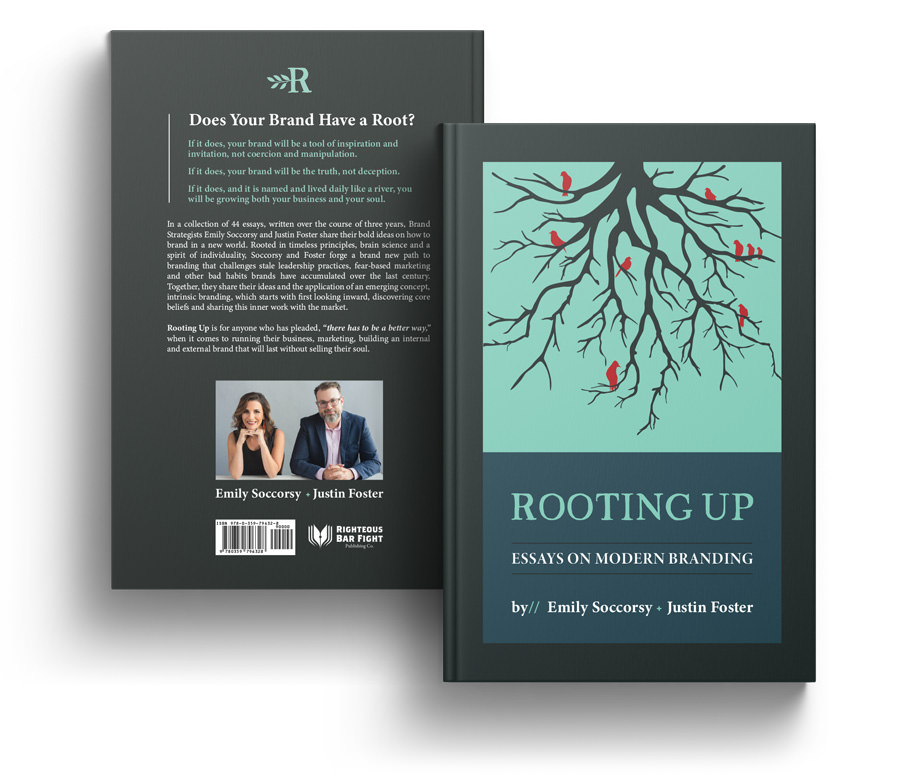Filed Under: 21st Century Branding, Beliefs-Based Branding
“Rather than love, than money, than fame, give me truth.” Ralph Waldo Emerson
By Emily Soccorsy
I spend most of my time working out of my home office, pounding away at my keyboard, taking phone calls and – if I remember to – forcing myself to get up and move.
It’s odd. You’d think because I am home, and not particularly physically busy, these would be relaxing days. But they are some of the most tiring days in my schedule.
The days when I am with other people, listening to them, learning from them, engaging in discussions, tussling with ideas, those are the days I find to be the most energizing.
Thoughts, positive challenges, and creative energy swirl around me those days. Although I am fatigued, I am also filled-up.
Ideas must be shared, tested, edited to find flight. And we, as humans, need time together to grow our businesses, our brands, and ourselves.
That’s part of the reason we try to offer as many gatherings we can. (If you’re interested in attending our next in-person Brand Lab event in Scottsdale April 13, go here.)
We also believe that if you want to improve something about your brand, you must do three things to make that happen:
1. Carve out time. Brands are not built in off-hand chats between meetings. They are not some catchy phrase that suddenly occurs to you and then becomes a spontaneous rallying cry for your entire organization. To begin building your brand, set aside time to work on the brand itself. Whether you set aside a few hours during your a week reflecting or synthesizing your brand, or you plan a one-day leadership team retreat, you will greatly benefit from dedicated time to consider what common beliefs, behaviors and standards hold your organization together.
2. Create space. Mental space, that is. You must intentionally create space in your mind to challenge what you think you know about branding. What is a brand? Write down your definition, without looking at any resources. Compare: our definition is “your presence when you are not present; the composite way others perceive, think and feel about you/your organization.” Then ask: What is your brand? What sort of brand experiences are people already having when they work with me or by knowing me? How do I feel about the brands I admire? What is evoked in me when I think of them?
3. Find an opportunity to be brand-centric. We believe all organizations should be “brand-centric” as opposed to product or service-centric. (Disney has decades of profit to show for its brand-centric approach, as does Nike, Apple, and The Honest Co., among others.) Find an opportunity to delve into your brand – whether it be a workshop, webinar or event. This gives you a chance to test the ideas you’ve developed in the above two and test them with an audience. Share what you have learned with others – not necessarily to determine if they like it or not – but to watch whether you’ve created a response in the form of more questions. The goal of any conversation about your brand is to create questions, to engage in conversation. All brands are born in conversations.
Some final caution: Part of the human experience is being in a space with humans, using our time to connect with one another and new ideas. Even if that’s not your idea of fun every day, it’s a powerful way to create momentum and movement. Although this new age of technology allows us to work remotely and work alone, don’t relegate one of the most essential parts of your business – your brand – to a conversation with yourself.
If you’d like help practicing any of these, we invite you to join us for our upcoming webinar (free, on 3/28), in-person Brand Lab or ask about our workshops, which we present at organizations throughout these United States.
